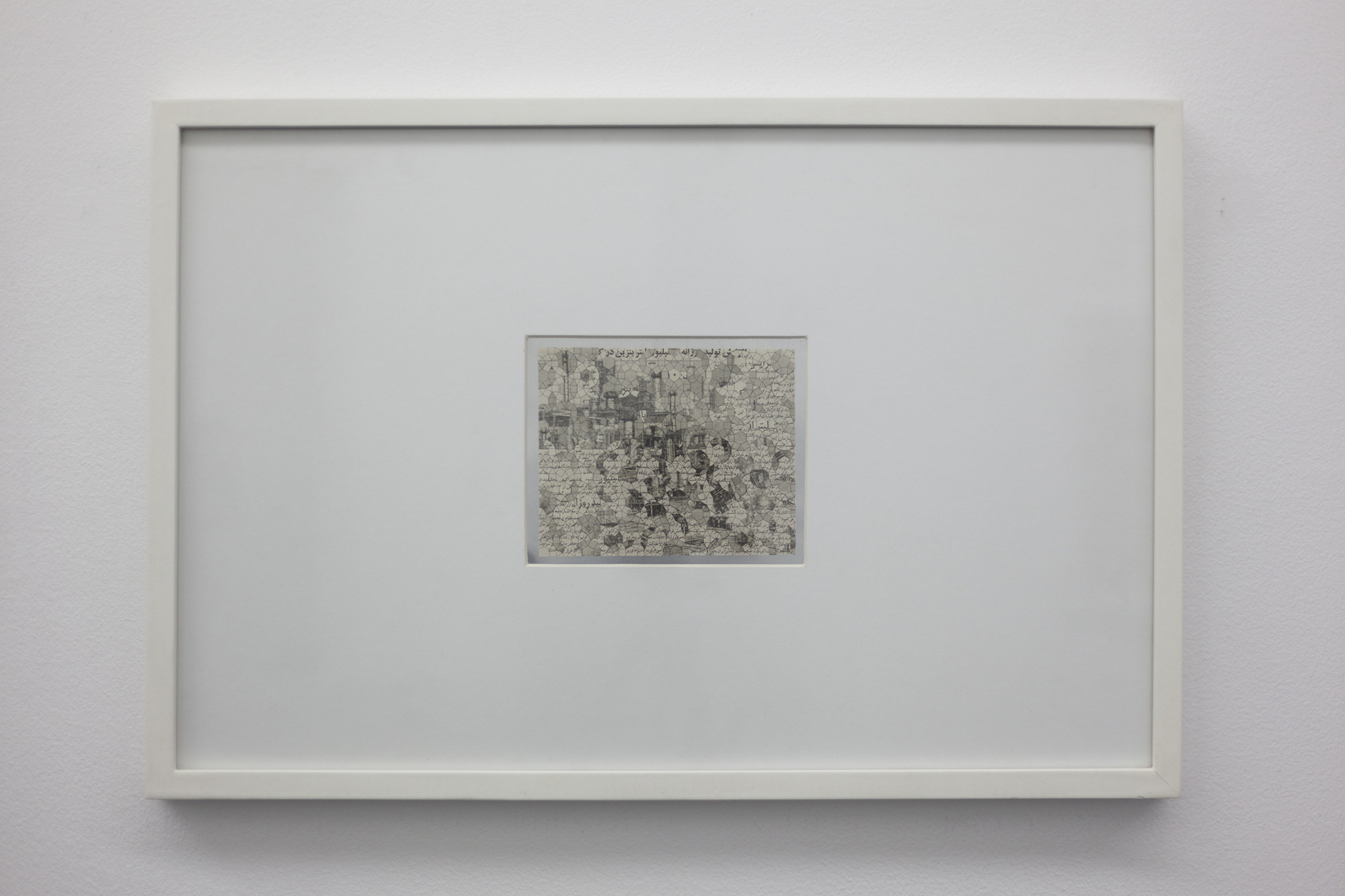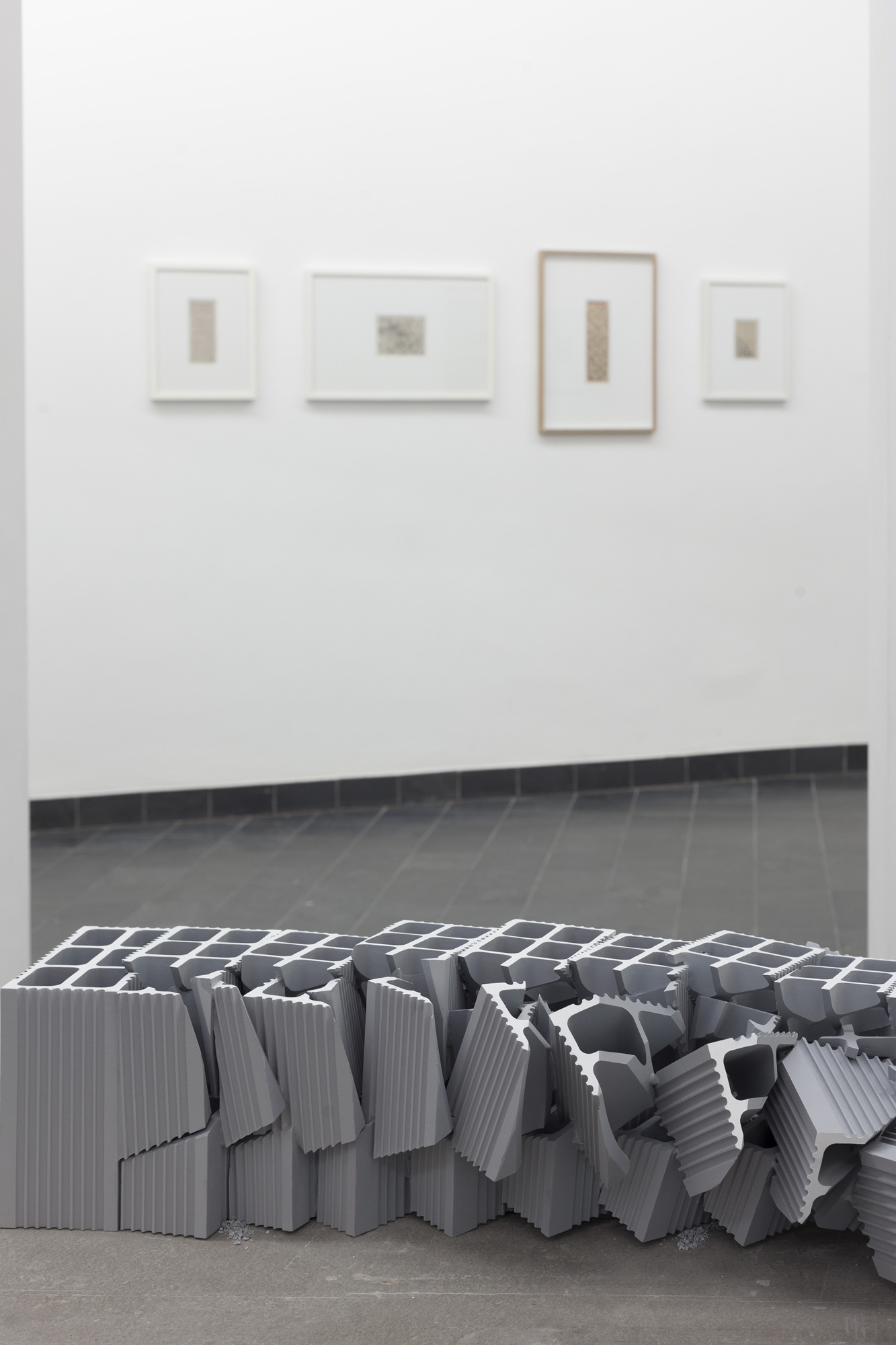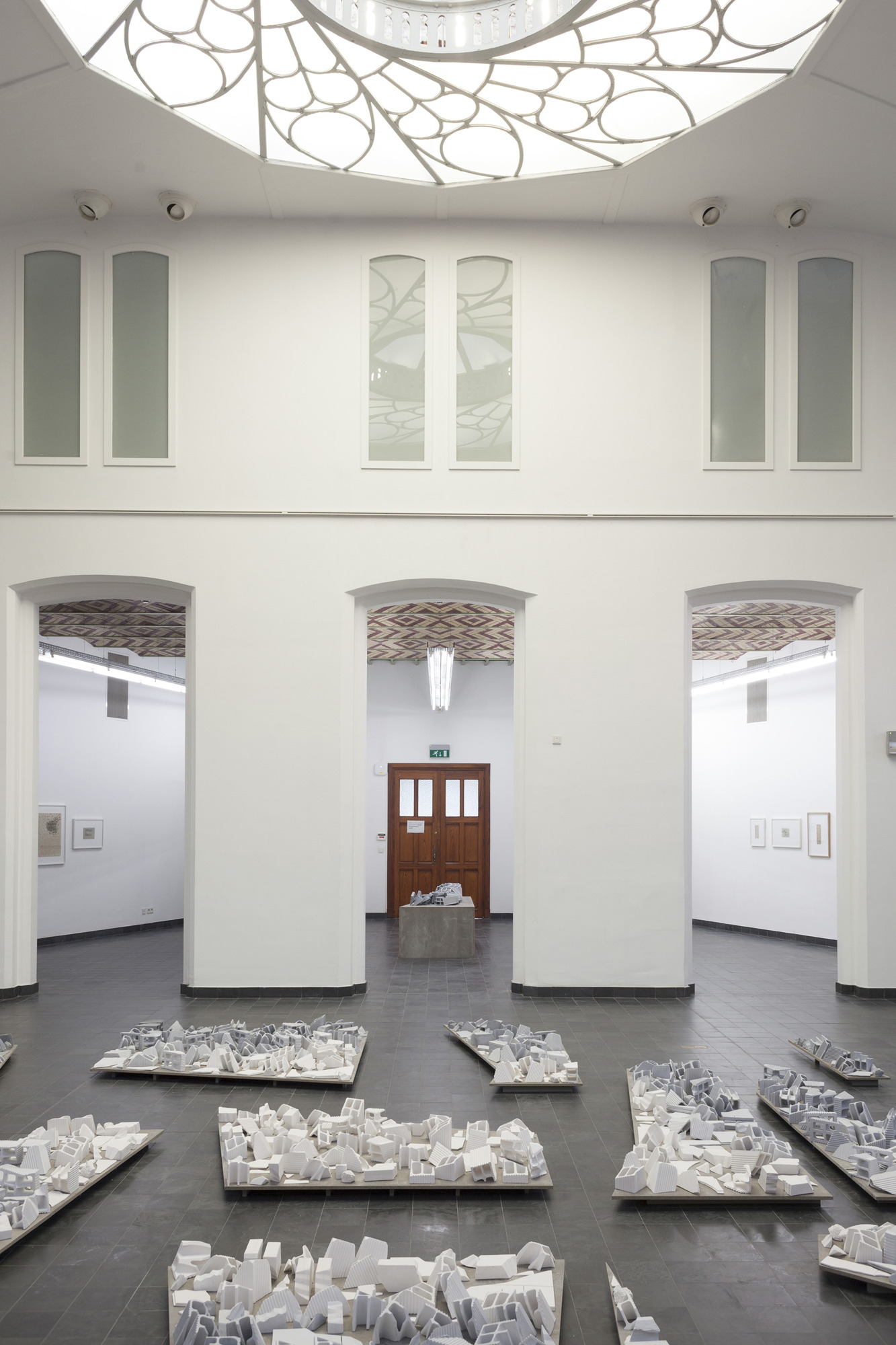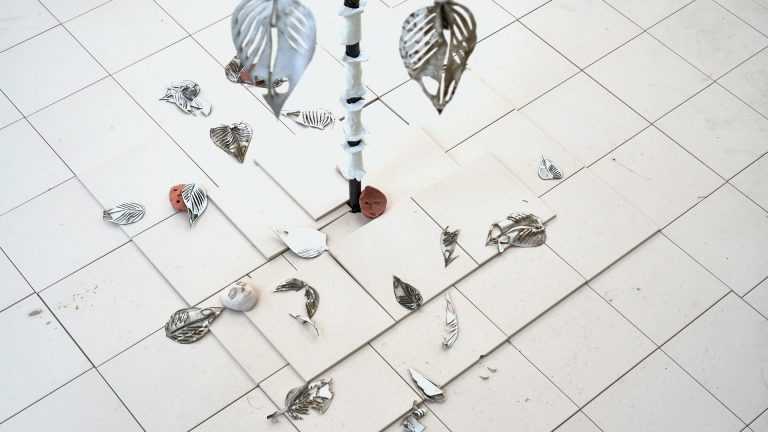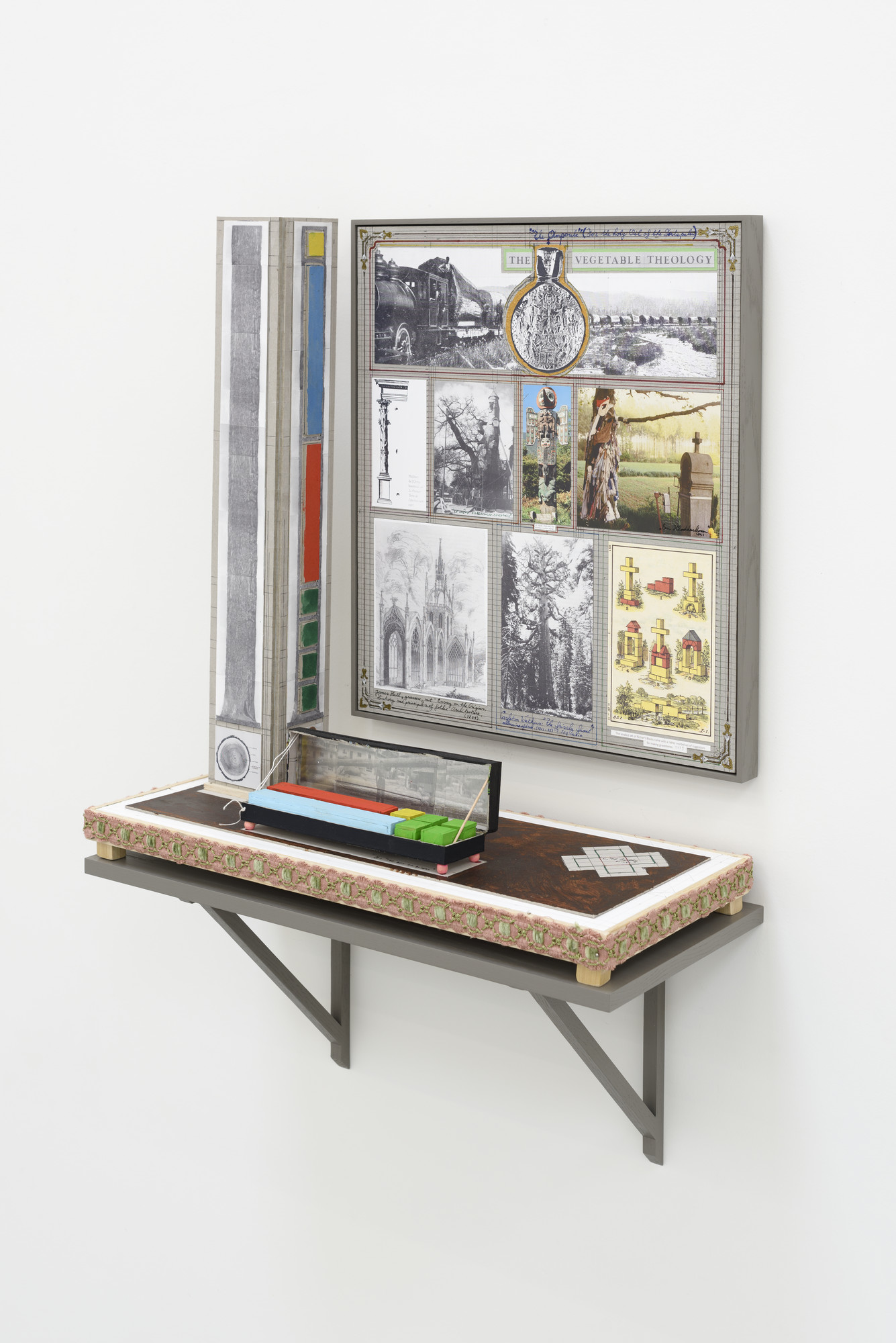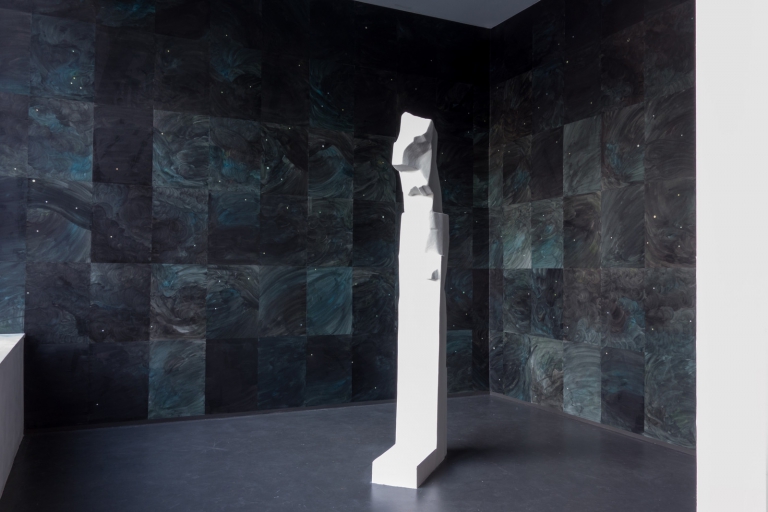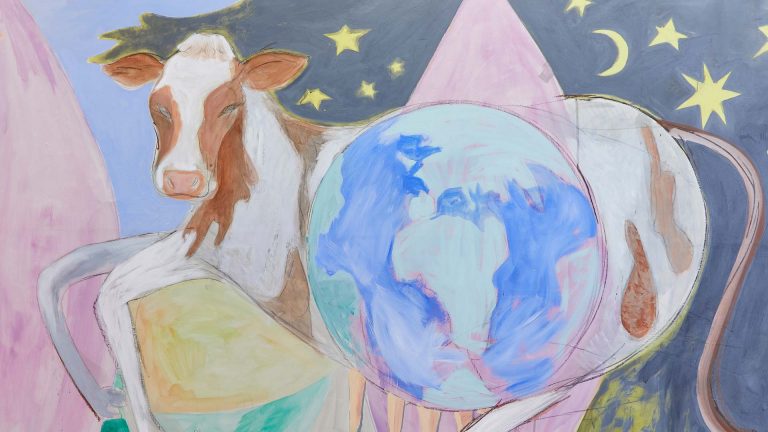Artist: Nazgol Ansarinia
Exhibition title: Fragments, Particles and the Mechanisms of Growth
Venue: KIOSK, Ghent, Belgium
Date: December 2, 2017 – February 4, 2018
Photography: © Tom Callemin, all images copyright and courtesy of the artist and KIOSK, Ghent
Note: List of works can be found here
The exhibition Fragments, Particles and the Mechanisms of Growth offers a view of everyday life in the city of Tehran, reconstructed from the perspective of Iranian artist Nazgol Ansarinia. Her artistic practice grows in parallel with her native city that now has almost 14 million residents: the traces left by capitalism grow ever more pervasive, the real estate market is booming, and houses make way for towering new apartment buildings and shopping malls. This results in a never-ending cycle of growth and decay, or as Ansarinia sees it, a paradox in which the construction of the city also entails its deconstruction:
“Every part of this city is associated with memories from different stages in my life. I think that’s what makes this fast speed of construction so destructive in a way. It’s taking away our collective memory and individual memory with it. Neighbourhoods are changing so fast that they are unrecognizable. You feel lost when you can’t relate to a space.” (from “The Artist and their City”, The Guardian / Tate, 2016)
By capturing, in words or in images, her observations and experiences, Ansarinia tries to get a handle on the innumerable mechanisms of growth that currently define Tehran. She turns urban developments or regulations inside-out, dissects and studies them, to reveal a collective consciousness or feeling in their reconstruction. For her new series Demolishing buildings, buying waste, she recorded and analysed the demolition of a building in Tehran and incorporates the ‘traces’ of the process as video and sculpture.
The video works show a cut-up registration of the building’s demolition by pick-axe and shovel over a period of 16 days. This memento of an everyday home, including a tiled space that must have served as a kitchen until very recently, seems to symbolize all vanishing buildings and the often very recent memories they hold. It also illustrates the notion that for each new building, an equal amount of material must be shoved aside.
The rubble that is swept off-screen in the video works on display in the side-room reappears in the dome room in a multitude of new sculptural forms. Shattered tiles, bricks, blocks and cement remains are scattered across the floor as naked standard building shapes, stripped of all function and context. They are ordered fragments apparently about to form a disordered whole, or vice versa.
In the sculpture in the entrance room, previously shattered elements seem to come together again to form a sort of spine, a new foundation. As in the other works, a moment between demolition and creation, dissection and construction, disorder and pattern is visualized. The works posit rationalized, industrialized building procedures in opposition to a slow, interrogative and intuitive creative process in which debris is used as a new building block.
In addition to these works, Ansarinia also presents Reflections/Refractions, a series of collages in which she weaves geometric mosaics out of Iranian newspaper clippings of articles on politics and the economy. The newspaper headlines once again suggest an underlying layer of reflection on the society of which the artist is a part and how it represents itself. As such, Fragments, Particles and the Mechanisms of Growth can be read as a personal portrait and reconstruction by Ansarinia of Iran’s many-layered and rapidly changing face.


